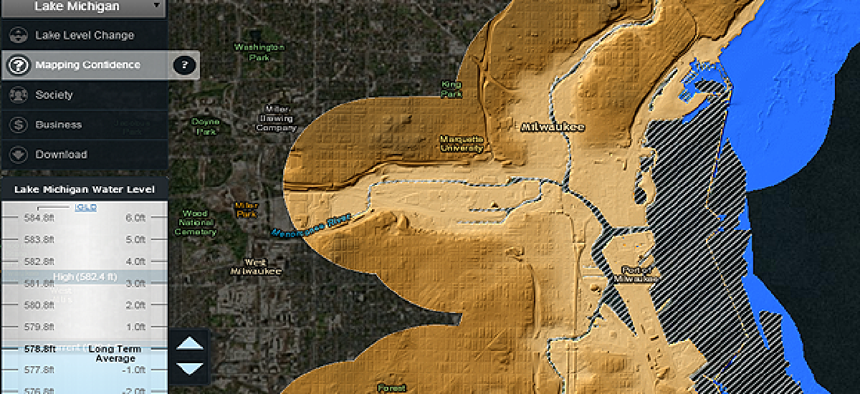NOAA’s lake-level viewer aids climate change planning


Connecting state and local government leaders
NOAA’s online visualization tool is designed to help communities along the Great Lakes plan for changes in water levels associated with climate change.
The National Oceanic and Atmospheric Administration has developed a new online visualization and mapping tool designed to help communities along the Great Lakes plan for changes in water levels associated with climate change.
The Lake Level Viewer uses high-resolution elevation data that lets users accurately visualize water levels ranging from zero to six feet above and below average lake level. Users can view elevation models, determine water depths at specific locations, examine data confidence and view economic impacts.
The tool was developed by the NOAA Office for Coastal Management as part of its Digital Coast initiative.
“The Lake Level Viewer provides planners and decision makers with visual lake level scenarios for rise and drop information before it happens,” said Jim Schwab, a certified planner and the manager of the Hazards Planning Center for the American Planning Association.
“Lake level scenarios can be incorporated into land use decisions, along with economic, social and environmental considerations, to make wise investments in public infrastructure and develop livable, resilient communities,” he added.
More than 4,900 miles of U.S. shoreline ring the Great Lakes, of which 3,800 miles are currently mapped on the Lake Level Viewer according to NOAA. The tool covers areas in Illinois, Indiana, Michigan, Minnesota, New York, Ohio, Pennsylvania and Wisconsin.
Great Lakes water levels are continuously monitored by U.S. and Canadian agencies in the region through a binational partnership. The annual rise and fall cycle of the Lakes’ water levels can be seen online for particular time periods beginning in 1917 via the Great Lakes Water Level Dashboard.
“In light of rapidly changing water levels, it is even more important to have a tool like the viewer to help communities visualize and plan for scenarios,” NOAA said in announcing the tool.
NEXT STORY: API expands 'We the People' petitions




